One of the major difficulties of writing up what we’re reading aloud is that we read A LOT. And since mama is picking the books at this point (without Tirzah Mae showing much preference), we read a new book (almost) every time. Which means there are a lot of books to talk about.
Since we’ve been reading a number of series books or books by the same author, I’m going to try to group them a bit (we’ll see how that works!)
BabyLit! Books
Little Master Baum: The Wonderful Wizard of Oz by Jennifer Adams
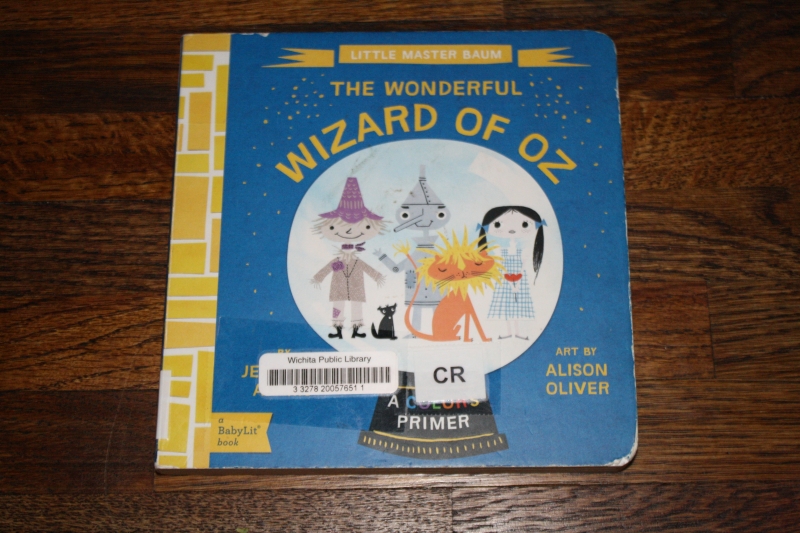
Daniel heard about the BabyLit! books when Tirzah Mae was a newborn, and requested the Pride and Prejudice and Sense and Sensibility ones from the library. The gist of these is that they introduce characters or plot points from classic books. The Wonderful Wizard of Oz was a “colors primer”. One layout is Dorothy’s blue dress and the blue munchkins. Another is the yellow brick road with a variety of yellow signs. Some of the colors seemed a bit contrived: pink had Glinda’s castle and rubies and socks while the scarecrow was “tan”. But it may be that the reason I didn’t like Oz as much as I enjoyed the Austen adaptations is simply that, well, I don’t like Oz anywhere near as much as I like Austen. The series is a solid one, and I’ll be looking for more of these – but I wouldn’t be buying the Oz one.
Mini Myths
These are very loose adaptations of ancient myths, set in modern day preschoolers’ worlds. (Why does everything for children have to be about themselves?)
Brush Your Hair, Medusa and
Make a Wish, Midas! by Joan Holub and Leslie Patricelli

Medusa has crazy curly hair, but she’d rather do somersaults than brush it. Grandma arrives before the hair is brushed, and summarily takes Medusa for a haircut. The only similarity with the myth is how Medusa’s hair looks.
Midas’ favorite color is yellow. He only wears yellow clothes, only eats yellow foods, and he wishes that EVERYTHING was yellow. But when he tries painting his pet dinosaur yellow, he gets his wish, but discovers that a yellow Dinoboo just isn’t the same. This one is closer to the myth, but I had a hard time figuring out why exactly painting Dinoboo yellow made Midas cry. It’s not as if his daughter had turned to gold.
Be Patient, Pandora! and
Play Nice, Hercules! by Joan Holub and Leslie Patricelli
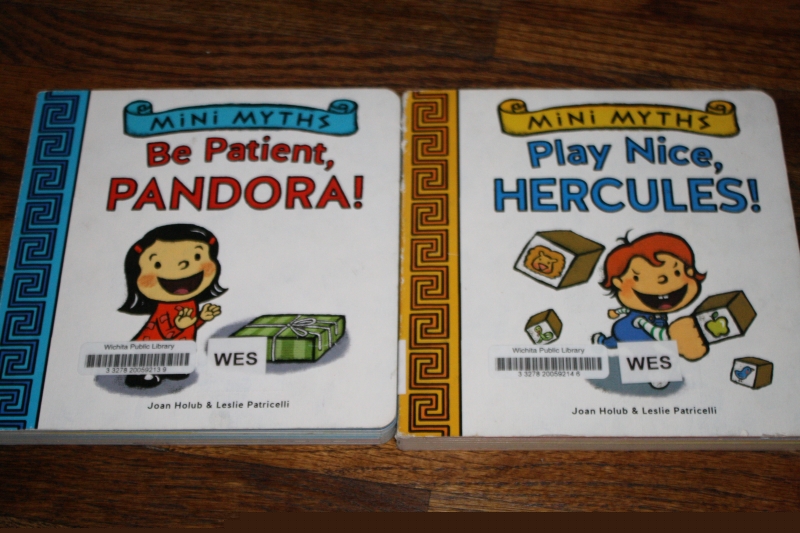
Pandora has been instructed not to open the wrapped box – but curiosity gets the better of her and she touches it, sits on it, stands on it, bounces on it. The bouncing is the last straw and the box bursts open, sending cupcakes all over everywhere. All the cupcakes save one are ruined. I thought this myth was actually quite well done.
Hercules is a strong little boy who likes to beat up bad guys (signified by toys) and to break down castles. Unfortunately, the castle he broke down is his little sister’s and she’s none too happy. Hercules has to make up for his error by rebuilding her a castle (which she summarily knocks down herself.) The myth is present in this one to some degree, but even if it wasn’t, this story and its accompanying illustrations are a cute description of family life, I think.
Books by Boynton
I am, in general, a fan of Boynton – but I actually managed to find a book or two I wasn’t so fond of in this go round.
Little Pookie
and What’s Wrong, Little Pookie? by Sandra Boynton
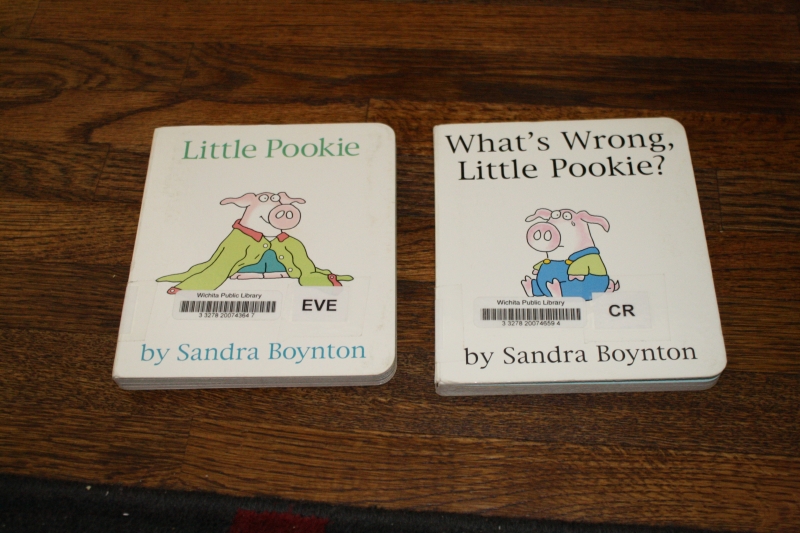
Boynton introduces us to Little Pookie the pig as Pookie’s mother shares ten (oh wait, make it eleven!) things she knows about her Little Pookie. A sweet little story that I imagine moms and little ones can identify with quite a bit (especially item 11: “You like reading books. And oh! I do, too!”) In What’s Wrong, Little Pookie?, Pookie’s mother tries to guess what’s wrong, giving more and more outlandish guesses each time – until Pookie has rather forgotten what got him so upset. These are precious little tales.
Dinosaur’s Binkit by Sandra Boynton
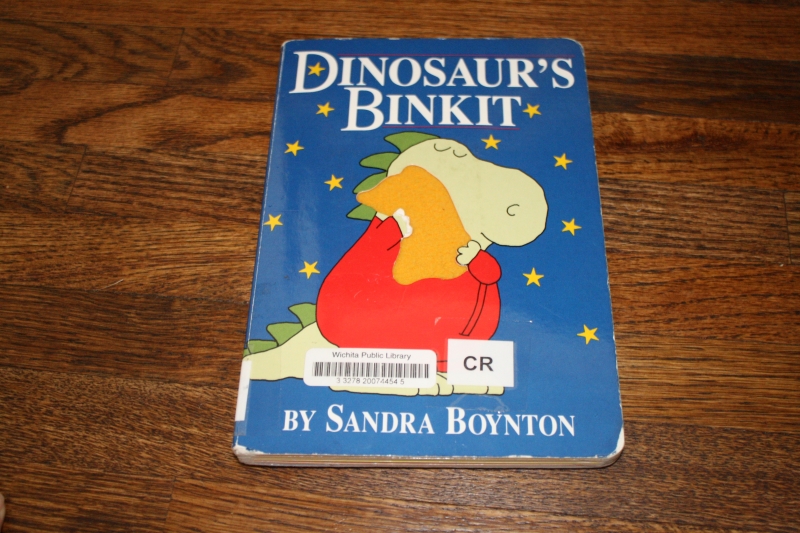
This one’s a lift-the-flap, touch-and-feel type book – and Tirzah Mae loved it. The narrator tells Dinosaur that it’s time to get ready for bed, so he begins the process, but does so very sadly (escalating to a full-fledged meltdown) because he couldn’t find his “binkit”. Dinosaur’s boy finds him crying in the closet and offers him a handkerchief – that happens to be the lost fuzzy Binkit. It’s a relatable story for many, I’d imagine (although, while Tirzah Mae definitely goes to sleep better with her “lovey”, she dosn’t meltdown if she’s missing it.) What made it fun for us was that this was the first time Tirzah Mae really got into the touch-and-feely part,
The Bunny Rabbit Show
Opposites and
Fifteen Animals! by Sandra Boynton
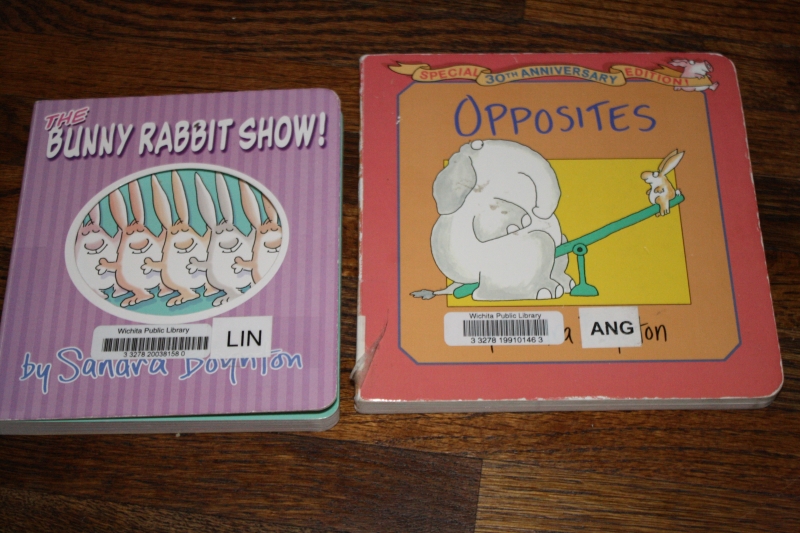

In The Bunny Rabbit Show, a chorus line of bunny rabbits sing and dance across the pages. I sang freestyle, with no tune in particular, but moms who are more particular can look up a recording of the bunny rabbits’ song. Maybe I’d enjoy the official version more – the book didn’t really do it for me.
The little protagonist in Fifteen Animals (which is also a song) has fifteen animals, all of which have their own special name: Bob. (Okay, they aren’t ALL named Bob. There’s a surprise at the end – don’t tell your child!) This is a silly, totally relatable little story.
Opposites is a pretty typical opposites book – with pairings of opposite words set amidst illustrations. It did have a few novel opposites that were well illustrated: “hello” and “goodbye” were fun.
Happy Hippo, Angry Duck by Sandra Boynton

A Bear? asks “Hello, Little Person! How are you today?” and then goes through a list of possible moods, each of which are paired with an animal (Happy as a Hippo, Angry as a Duck.) This wasn’t my favorite of Boynton’s books, probably because there isn’t anything inherently angry about a duck and the cartoon-style illustrations didn’t strike me as crystal clear about what each mood “looks like”.
The Belly Button Book by Sandra Boynton
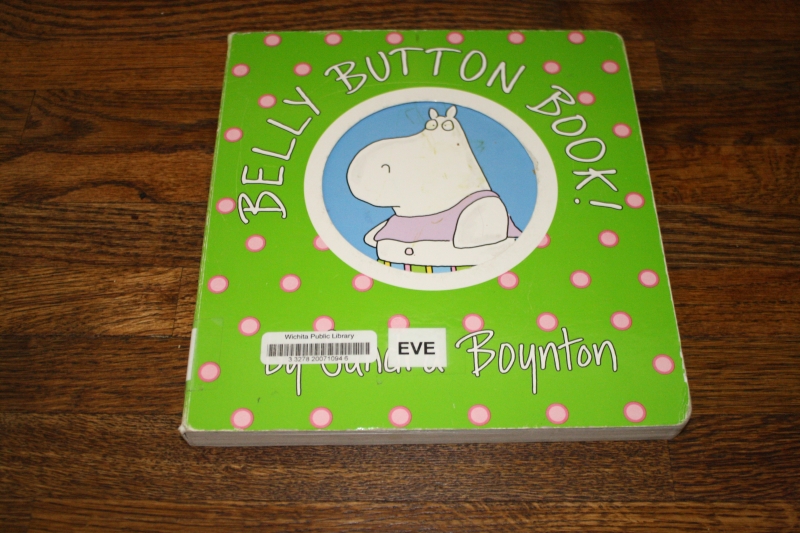
I think some people would find this book of bathing hippos showing off their belly buttons hilarious. I’m not really a fan of belly-button-baring-bathing suits, though, so I was less impressed.
Other Books by Familiar Authors
Black & White by Tana Hoban
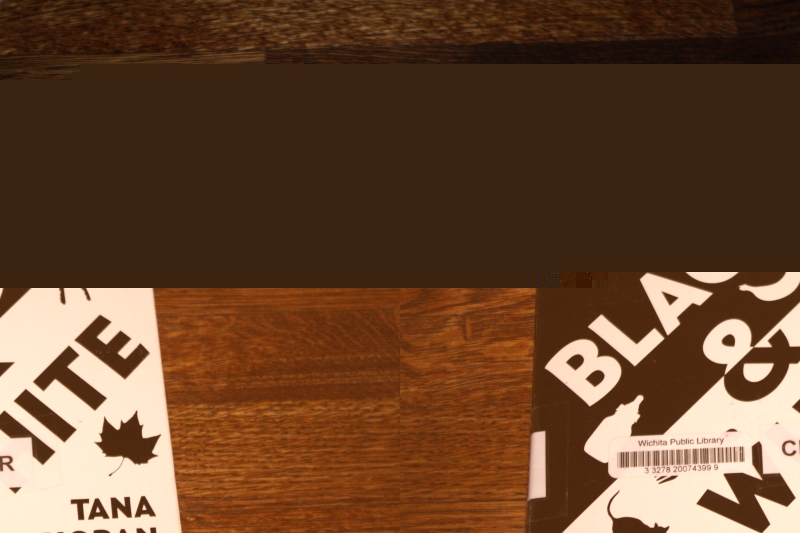
These are the same black and white outlines that can be found in Black on White and White on Black, except that they’re in an accordian fold that folds and snaps into the dimensions of a normal board book. I wasn’t a huge fan of them as separate books and I’m not too fond of them in this form either.
Hide and Seek Harry at the Playground by Kenny Harrison
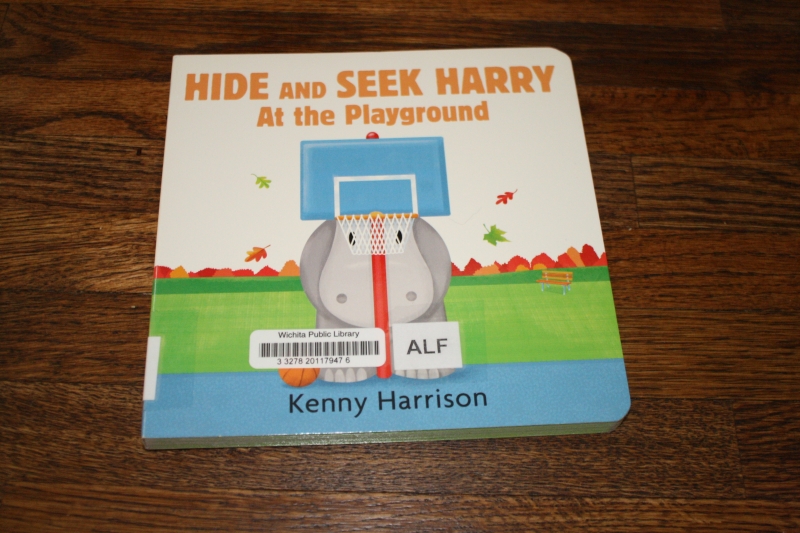
The last of Harrison’s Hide and Seek Harry books (that my library owns). We continue to enjoy this simple series where Harry the Hippo hides out (not so secretly) in a variety of settings.
Mommy Hugs by Karen Katz
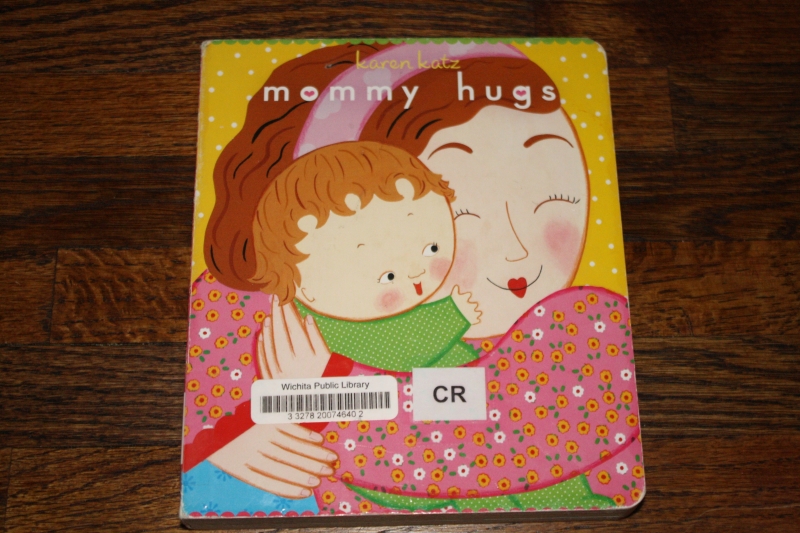
Katz has been a mixed bag for me – but I think this one goes on the “like it” list. The mama in the book counts up ten different types of “Mommy hugs”, from one “nuzzle-wuzzle wake-up hug” to ten “I love you,”(x10) “goodnight hugs”. I don’t know that Tirzah Mae looked at the illustrations much, but she sure enjoyed the hugs :-)
New Authors This Month
Chicks by Laura Ellen Anderson
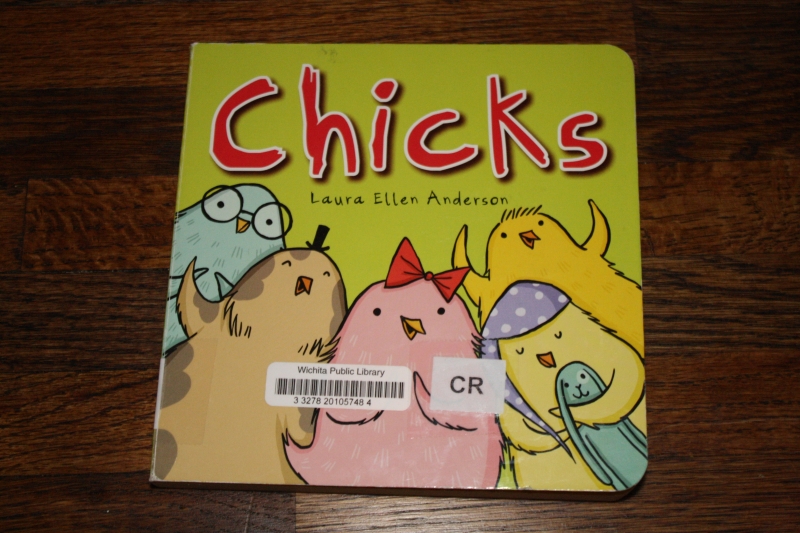
A sweet little book with multicolored chicks going about their days – from hatching in the morning to snuggling together at night. Tirzah Mae enjoyed looking at the pictures. I enjoyed the one sleepy little chick who came out with her nightcap on – and kept it on all throughout the day, catching naps whenever she could (I wonder why I enjoy that so much – perhaps because I am *definitely* a fan of sleep and my daughter is definitely NOT?)
Summer by Chris L. Demarest

Simple two to three word sentences describing things you’ll see at the beach in the summer. The pages are cut into odd shapes to allow continuity from one page to another (because the skyline, for example, is from the previous page). Overall, though, this book was an “eh” from both Tirzah Mae and me.
A Circle Here, A Square There by David Diehl

A simple book in which shapes are found in a variety of everyday objects – a triangular piece of pizza, an oval egg, a diamond-shaped kite. The text is simply the name of the shape – but the simplicity of this one is charming. I think we’ll be taking a look at this again as Tirzah Mae gets a little older.
Baby Animals Spots and Stripes by Phyllis Limbacher Tildes

This black and white wordless book is just delightful. The detail of the animal drawings remind me of plates from an old nature guidebook. There’s a spotted rabbit, a raccoon with a striped face and tail, a spotted box turtle, a striped king snake, etc. Tirzah Mae liked looking at these pictures as I showed her the stripes and the spots – she also liked the surprise color illustration on the last two-page spread!
Who Says That, Cat the Cat? by Mo Willems
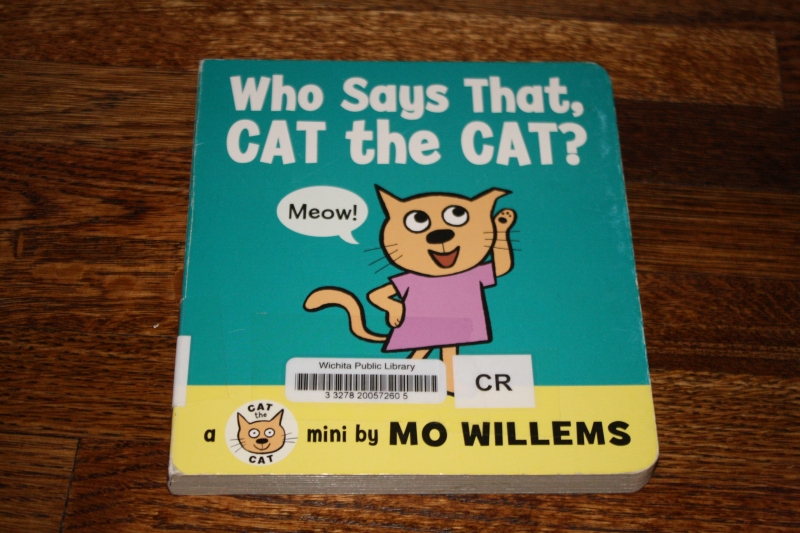
A simple animal sound book in which Cat the cat goes around asking different animals “What’s your sound?” “Hound” the hound and “Cow” the cow and all the other animals answer with their respective sounds – until they get to Bunny the bunny, who answers with a worried look and a little scribble in her speech bubble. Cat the cat answers with “Sounds like somebody needs a hug!” and all the other animals hug the nervous bunny. Cute.
Check out what other families are reading aloud at Read Aloud Thursday at Hope is the Word.

